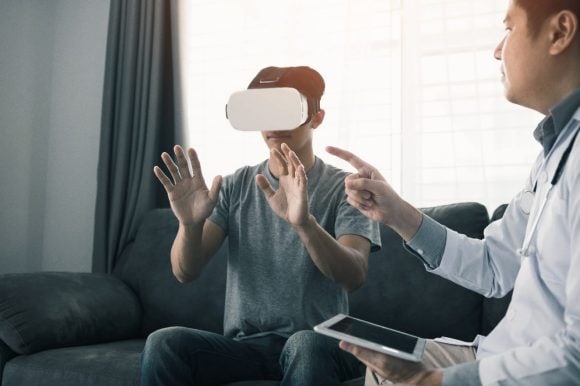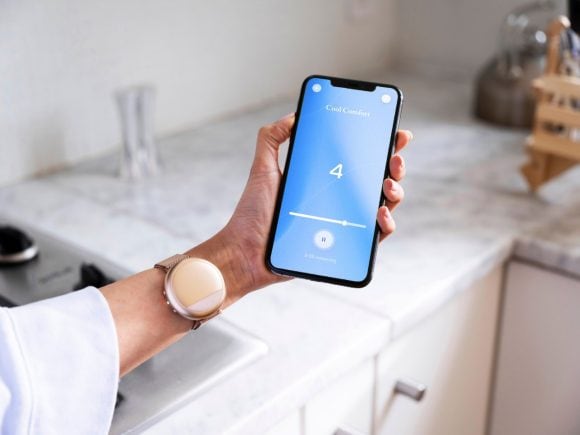Digital health diagnostics
In partnership with The Future Laboratory
Bolstered by the ongoing effects of Covid-19 and supported by evolving consumer attitudes to medicine and wellness, the world is entering a new era of health consciousness – and tech is at its center.
As the health needs of patients continue to grow in scale and complexity, care systems around the world are under increasing pressure. Exacerbated by global demographic changes – including an aging and expanding population, socio-economic barriers and a global pandemic, the healthcare industry is at a turning point.
The World Bank Group forecasts that by 2030, there will be a global shortage of 15 million healthcare workers, while the Association of American Medical Colleges (AAMC) notes that by 2033, the US population will need 139,000 physicians that don’t exist.
But with unprecedented access to technology forging an age of digital citizenship among consumers – where connectivity and devices become part of the fabric of daily life – a fundamental value shift is occurring. Instead of being viewed as its enemy, tech is now being reframed as a facilitator of health, with a wave of digital solutions set to empower people to take ownership of their health and alleviate pressure on an industry at breaking point.
The changing face of the family physician
According to McKinsey & Co. society experienced five years of digital transformation in the first eight weeks of the pandemic – and perhaps nowhere was this acceleration felt more significantly than in healthcare. With Covid-19 bringing scheduled doctor and hospital visits to a near standstill, traditional healthcare providers were forced to fast-track digital solutions: think interactive symptom-checkers, 24/7 consultations and downloadable prescriptions.
‘The pandemic has mainstreamed the consumer side of digital health technologies in less than a year,’ says Raj Prabhu, CEO of global communications and research firm Mercom Capital Group. ‘Digital health products that were a novelty a year or two ago are now a necessity.’
With Mercom’s own research revealing that venture capital funding for digital health companies hit a USD 15 billion high in the first half of 2021 – up 138% compared to the first half of 2020 – investors continue to pour cash into the sector, convinced of digital’s transformative impact on the world of health.
Major companies are also focusing on the burgeoning sector. JD Health, a subsidiary of Chinese e-commerce giant JD.com, was quick to harness the value of the world’s changing medical needs, launching a family doctor service that promises to provide immediate responses from general practitioners alongside personalized advice.
Communities of care
Beyond connecting consumers with clinicians, younger demographics are also harnessing digital platforms as alternative support models for chronic conditions, connecting with fellow sufferers for advice, comfort and a sense of community. Despite their fabled preoccupation with health and wellness, young people are being diagnosed with chronic conditions at a startling rate. Data from Blue Cross Blue Shield Health Index shows that one-third of US Millennials have health conditions that reduce their quality of life, while in England, the percentage of 16–34-year-olds experiencing chronic pain is at an all-time-high of 34 percent, according to Public Health England.
Overlooked, and less likely to seek guidance from a traditional GP than the generations before them, Millennials and Gen Z are turning to brands that are rewriting the public narrative of chronic illnesses. Superbloom, a social media platform that functions as an intersectional safe space for people to track their health journey, share stories and explore solutions, is one example. Similarly, US-based Club Psora is a digital space offering affordable membership for those with skin conditions to engage in long-term peer-to-peer support.
Augmented healthcare
As we move through the decade, transformative technologies like artificial intelligence (AI) and virtual reality (VR) will power new capabilities in the world of health, alleviating pressure on existing healthcare systems by enabling increasingly effective digital health solutions.
AI is already being used to detect disease earlier and more accurately. Babylon Health notes that its app achieves a score of 81% in a diagnostic exam, compared to a five-year average score for human clinicians of 72%. This precision is set to transform AI into a trusted health confidant for consumers. And the big sell? It’s increasingly predictive in nature.
In the future, AI embedded into your devices won’t just tell you that you are unwell but will assess your vital measurements in real time – including heart and respiratory rate, hydration, blood pressure and blood sugar levels – to predict and prevent chronic health conditions before they appear. Google and Amazon have already outlined plans for their smart speakers to create this type of audio signature of a user in their homes, meaning the detection of sneezing, coughing or even crying could activate an AI alert that results in the delivery of the appropriate prescription.
In the shorter term, virtual reality will offer a key means of pain treatment too, with the immersive experience often being shown to reduce activity in the five regions of the brain associated with pain. US-based XRHealth offers pioneering virtual reality therapeutics (VRx) – equipping patients with pre-installed headsets suited to their various needs. Despite its digital categorization, this type of therapy is a win for the increasingly holistic mindset of consumers and patients, offering an alternative to the side effects and addictive complications associated with many pharmaceutical options.

Key implications
Key implications
- Alleviating pressure: Rather than entirely replace healthcare models, digital solutions will alleviate pressure on healthcare systems that are at breaking point, creating new opportunities for consumers to access integral services wherever they are.
- New professionals: Emerging technologies will usher in employment opportunities for new starters or established healthcare workers, with workforces augmented by digital capabilities to work more accurately and efficiently.
- Demystify data: Truly transformative digital health solutions rely on patient data. Ensure consumers transform their relationship with data by offering clearly signposted usage pathways and transparent security measures.
- Eliminate bias: As AI-powered digital healthcare gains momentum, it will be imperative that organizations watch out for the technological bias that continues to affect diverse communities in faceless design systems.
More to explore
More to explore
The price and value of investments and income derived from them can go down as well as up. You may not get back the amount originally invested.







